
William Crow Jewelers




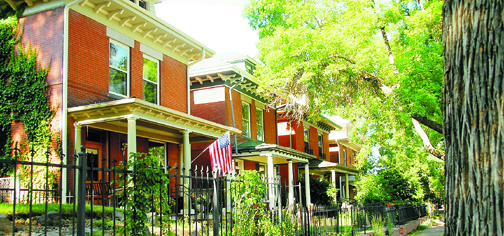
by Chris DeGusto

The methodology dedicated to handling Denver’s short-term rental (STR) industry is fairly new, as the governing structures used today are from a 2016 city ordinance. Ongoing efforts to find a perfect solution in an imperfect situation — one that makes everyone happy — have been difficult to find. Denver is faced with rapid growth, and this expansion has fallen upon current and future residents to placate.
Almost anyone who has heard of STRs has an opinion about them due to a personal experience of some kind. Yet, multiple people in the Mile-High City have declined to tell their story, and most who elected to share spoke in hushed, prudent tones with lowered eyes. They shot frequent glances around and recounted their anecdotes incompletely.
“I was told not to [speak on the record],” said Rebecca after a pause. “I was told that there could be retaliation. I don’t know what’s going on. I don’t know, I just think this is much bigger than it appears.”
Rebecca declined to provide her last name. She chose not to elaborate on her remarks, define what she believed retaliation would entail or from whom it could come. A large portion of those who spoke to the Glendale Cherry Creek Chronicle would not divulge any information at all but acknowledged they were affected in some way.
Denver’s STR conversation has many sides. The business side has provided crucial financial benefits for some. Others have lost faith in their neighborhood’s economic value. But a report released in April by the Denver’s Economic Development and Opportunity Department exhibited that STRs have not had a significant impact on the cost of housing. According to the report, only one percent of Denver’s housing supply is an STR, and revealed weak correlation to local rent increases.
Still, like Rebecca, some are more concerned with how STRs affect daily life in their community.
Sophi told the Chronicle that people have mistakenly tried to enter her home in the middle of the night on multiple occasions, as recently as this month. Intruders on her property were supposed to be at the STR next door where they were staying.
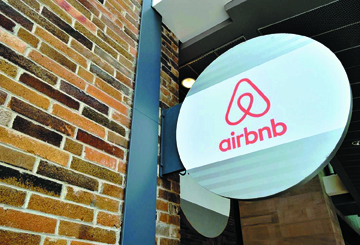
“The dogs woke up and were barking and trying to figure out what was happening — I thought somebody was breaking in,” said Sophi. “I am often alone in the house. It’s not a great feeling to be next to a really drunk [group of] guys or to have people trying our door. I think once you get that many people together who are not all with it, that’s a safety issue.”
Others have expressed similar safety concerns but declined quotation.
Rebecca and Sophi share a home in Denver’s Washington Park neighborhood next to a “mega-mansion” of roughly 2,000 square feet. According to Sophi, the property has often hosted bachelor parties where the guests’ goal is to “drink as much as they can and smoke as much as they can.”
As an STR property manager, David Pardo’s “bread and butter” are “big and noisy parties.” Pardo, who has been an STR host for over five years, has managed a combination of properties ranging from one-bedroom apartments to larger townhouses. In an interview with the Chronicle, he said that over 1,600 groups of guests have utilized his properties. Some of these sites have specifically catered to events such as bachelor and bachelorette parties, and Pardo estimated that he has hosted over 100 of these gatherings. These homes are located in areas of commercial use where local zoning laws do not prohibit the operation of business, and downtown, where noise is already generated from local bars and nightlife.
According to Pardo, the vast majority of his guests have not broken any rules established by both the hosting platform and himself. Most of the harm Pardo has experienced caused him personal logistics problems but hasn’t affected close-by residents in any fashion.
“All the neighbors of my properties know exactly what’s going on. They have all the contact info,” said Pardo. “We’ve got all the noise awareness systems, sensors, cameras — we know what’s going on because we don’t want our guests to have a [negative] impact. We build that into our system. That’s not a requirement that the city has. That’s a requirement that I have for myself. It’s personal practice for the sake of my business.”
Not all STRs are in stride with legality. Denver’s 2016 rules state that an STR can only be operated from a primary residence. In June a couple was charged with felonies for running an STR outside of their primary residence.
Denver’s Office of Excise and Licenses spokesman Eric Escudero said in a recent email correspondence with the Chronicle that Denver is not anti-STR and explained how the city has investigated potentially illegal STRs.
“After collecting evidence that shows people are operating an STR that is not their primary residence, Denver frequently sends out an affidavit to suspected illegal STR operators giving them one last opportunity to come clean,” according to Escudero. “If they lie on the affidavit attesting their STR is their primary residence, they could be charged with the crime of influencing a public servant.”
To mediate the STR conversation and push the industry in Denver toward more effective operation, Denver’s Short-Term Rental Advisory Committee (STRAC) has orchestrated the rollout of a dual-phased plan. The first section is focused on updating current language and defining terms such as “primary residence” in a clearer fashion as 2019 concludes.
The Committee’s mission is to “provide guidance and recommendations to Excise and Licenses policies pertaining to the STR licensing program.” They have hosted meetings that encouraged public comment, and members of the Committee include STR hosts, industry stakeholders, residents of the neighborhood and elected city officials.
Hosts of STRs must also obtain licensure to operate lawfully. Denver currently has a 78.3 percent compliance rate, one of the highest in the nation according to the most recent data from the Office of Excise and Licenses. In the same data set is the compliance rate of other major cities: Nashville, 59 percent; New Orleans, 58 percent; San Francisco, 42 percent; Austin, 18 percent.
And while complaints about STRs are the most common to the Office of Excise and Licenses, this data has shown that Denver has displayed positive trends. STRAC provided data at their October meeting as well; complaints about STRs to the 311-information hotline have gone down from 92 in 2018, to 72 as of October 2019.
Phase two of STRAC’s plan is set to roll out as 2020 hits its second quarter. Their proposed plans included finding the best practices and legal parameters for property management requirements, as well as working with other cities to draft effective new language centered around platform accountability.
Industries that have thrived due to STRs have taken a hit. Joyful Soul Cleaning’s owner Kayla Darling has operated her business within STRs. She has been able to create jobs for many others in part due to rental properties and joined the conversation with the hopes of changing peoples’ hearts and minds but told the Chronicle that she has lost business due to the decrease in rental properties.
“It’s definitely important to me that our voices are heard, so that we can say, hey we want to work with the city, we want to work with the communities to make [the STR business] a positive experience for everyone that we can,” said Darling. “But then also, we don’t want half of to go away.”
According to the Office of Excise and Licenses, the number of unique property listings has dropped 21 percent since last October, and 158 applications for licensure withdrawn since April. Additionally, the total number of active licenses has gone up 24 percent. This provides evidence that more residents have looked to follow compliance rules, but less have listed their homes as an STR.
One thing is clear: the growing pains of Denver’s STR industry can only be cured with efforts from all sides.
“Please, in all of this just consider that there’s a very large portion of [STR] hosts that want to help,” said Joe (who declined to give his last name). “I’m trying to assume some of the responsibilities, and some of it is — we simply don’t even know [about complaints]. I’ll tell you this. There’s change coming from the host community. We’re taking more responsibility, we’re stepping up.”

Coworking Expands, Corporate HQs Replacing District Shops, Claim It’s Now Second Oldest Commercial Block
by Glen Richardson

This holiday season will be the last for one of Denver’s oldest gift shops as the 45-year old Tender Thicket along Old South Gaylord has lost its lease to a developer. It’s the conclusive indicator that this is the end of an era for Denver’s second oldest historic district. The Thicket’s home on Gaylord St. is close to 100 years old. — it’s historic — but the neighborhood decided not to designate it that way and that applies to all the stores along Gaylord.
Larimer Square is Denver’s only locally protected historic district, designated in 1971 after a determined Dana Crawford saved the block. Its historic designation was the first in Denver that recognized not only individual historic buildings but a collection of buildings and their setting.
The quaint Gaylord block in the heart of Wash Park — between Mississippi and Tennessee Ave. — was, until the last couple of years, home to unique shops but is shifting into a commercial block similar to how Cherry Creek North is changing. Until recently area realtors could claim Old South Gaylord was the embodiment of what a neighborhood should look like, a historic district of inviting boutiques, art galleries and great restaurants.
Distressing Demolition
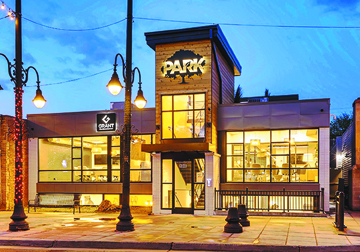
The Tender Thicket survived three moves, four owners, a flood, economic ups and downs, but redevelopment will be its final move. Grant Real Estate Co. owner Aaron Grant purchased the 5,500-sq.-ft. building that houses the Thicket and adjacent Edward Jones building (now vacant) for $2 million. At the same time in 2017 Grant purchased the building at 1040 S. Gaylord for $2.9 million and converted it into Park Coworking that is now open with 24 stations and 16 dedicated desks. He now plans to bulldoze the other two buildings and add a second coworking space. “It hurts my heart that this cute neighborhood will no longer be part of the Old South Gaylord community,” Tender Thicket owner Maury Ankrum tells the Chronicle.
The Thicket building was once a pharmacy and, in fact, they resurrected the pharmacy counter as their checkout counter and still have the first medicine cabinet in the back. “It was important to me to keep a bit of its history intact,” she says.
Ankeum is now looking for a new location, but hasn’t yet found the perfect fit. I am profoundly grateful and humbled for the years of love and support this neighborhood has given us,” she adds. “We will miss it dearly. I hope my customers will stop by to say goodbye and snag some fantastic deals as they check off their holiday list.”
History Lost

While the Tender Thicket building is believed to be Gaylord’s oldest, the block is dramatically changing as several developers are buying up the land to add office space in lieu of retail and restaurants. The Thicket is just one of many stores that have left or are leaving.
On the west side of the street, Gaylord has lost Denver’s No. 2 ranked art gallery Arts at Denver, a tailor, two hair salons and a bike shop. In addition to the Thicket, the east side of the street has lost or is losing The Tavern, Washington Bark, Sole Sisters (a shoe store), Little Angels (a pet boutique) and Edward Jones.
The prime corporate takeover of historic assets taking place on the west side of Gaylord is the corporate purchase of the former bike shop (Singletrack Factory) near the corner of Gaylord and Tennessee by LotusGroup Advisors.
Corporate Takeover
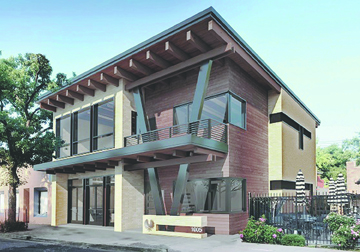
The Cherry Creek-based financial firm’s Managing Partner Raphael Martorello paid $1.4 million for the property, has bulldozed the building and is spending at least another $1.8 million to build out a 7,200-sq.-ft. two-story corporate office in the heart of the historic Wash Park neighborhood.
Designed by Neo Era Architecture and being built by 303 Construction, the firm had projected completion in the second quarter of this year. In mid-Oct. as this article was written only two of the four walls of the corporate space are up.
When announcing the project along what he called a quaint and nice street, Martorello said he chose the site because we wanted to achieve a “commercial building that feels like a home.” At the time he declared the new corporate HQ would have “an open floor plan, energy efficient construction, many spaces for collaboration, and improved parking over Cherry Creek.”
Gaylord’s History

The 1920s were the golden age of movie theaters, and, in 1925 Gaylord opened its own motion picture palace. The Washington Park D & R Theater (now home to Charcoal Bistro) at 1028 South Gaylord St. was built by Carl Adler, who also operated the South Gaylord Home Bakery. On opening night of the theater in August 1925, two Shetland ponies were given away as a promotional event. The Washington Park R & D viewed itself as symbolizing “a new ideal in entertainment,” a community theater which was up-to-date in every detail.
A business district was flourishing along South Gaylord by the early 1920s. Chrysler & Son was the first to establish a business in the area, erecting a brick store at 1075-1083 South Gaylord St., in 1915. Historians say that the shopping area “was mostly a product of the 1920s when streetcar #5 terminated there and attracted shoppers on their way to and from work.” The 1000 block of South Gaylord was zoned Business-Retail when the city was first zoned in 1925. By 1930 the block featured three clothes cleaners, two beauty parlors, two barbers, two plumbers, a sheet metal worker and a shoe repair shop.
As Denver basks in a period of massive growth combined with the commercial potential of historic districts, the historic designation of buildings and homes is likely to have little impact on the ground. Developers from Denver and elsewhere will continue to receive over-the-counter demolition permits and raze buildings and homes to destroy history for profit.
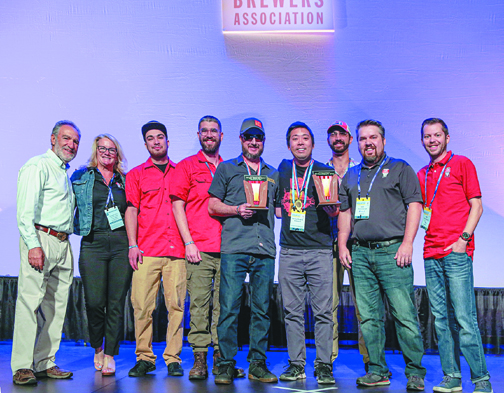
35 Colorado Breweries Take Home Medals With Plenty Of Other Breweries Around The Country Impressing
by Richard Colaizzi and Mark Smiley

Great American Beer Festival (GABF) celebrated its 33rd year the weekend of October 5, 2019. The Colorado Convention Center once again served as the venue sprawling 584,000 square feet of space for over 800 breweries to pour over 4,000 different types of beers.
Comrade Brewing, located at 7667 E. Iliff Ave. in Denver, was named 2019 Small Brewing Company of the Year and Small Brewing Company Brewer of the Year by the Brewers Association at the awards ceremony held on Saturday, October 5, after receiving gold medals for two of its India Pale Ales, Superpower IPA and More Dodge Less Ram. These are the fourth and fifth medals the brewery has won since opening in 2014.
“We still can’t believe what happened at the Great American Beer Festival,” said David Lin, Founder of Comrade Brewing Co. “We always try to make the best beer we can and this year the judges thought so too. We’re incredibly proud of the brewing team Marks Lanham and Rio Urioste. It’s an honor to win small brewing company of the year and we’ll continue to do our best here in southeast Denver.”

The Small Brewing Company of the Year category is one of the most competitive as most breweries in the country brew between 1,000 and 14,999 barrels of beer per year. This is quite the achievement for a brewery which has a simple philosophy. “We make beer we like to drink and whatever is left over, we sell,” said Marks Lanham, Brewmaster for Comrade Brewing Co.
Superpower IPA was awarded a gold medal in the American-Style Strong Pale Ale category, which had 131 entries. Superpower IPA is an American IPA with loads of Pacific Northwest hops that lend huge pine and grapefruit hop aroma and citrus flavors. Its bitterness is balanced with a crisp, light malt character and is available year-round at the Comrade Brewing tasting room.
More Dodge Less Ram, a triple-dry hopped sister of Superpower IPA, took gold in the second most-entered category, American-Style India Pale Ale, which had 342 entries. More Dodge Less Ram was the first beer that Comrade brewed after a Dodge Ram plowed into the brewery three years ago.
“I told David on August 25 we were going to win this year,” said Lanham. “It’s been a challenging year for both of us. David got married and had a child. I had less fortunate things happen to me. When these things happen, it drives me to do better.”
A total of 322 judges from 18 countries do blind tastes to evaluate the beers in defined style categories. This year, 2,295 breweries from around the country, Puerto Rico and the Virgin Islands submitted entries. There were 9,497 entries overall.

“This year’s GABF competition was the largest and most competitive to date,” said Chris Swersey, competition manager, Great American Beer Festival. “The beers and talent were as impressive as ever, and we congratulate this year’s winners for their achievements in brewing.”
In addition to the medal winners, there are standout and under-the-radar beers that by the end of the festival, word has spread. 2019 was no different for these exciting, and at times, adventurous beers. These reporters were successful in trying over 150 beers over the three days of GABF, and the following beers deserve attention. While it is difficult to rank them based on favorites, all of them were outstanding beers, and most of them had large lines waiting to try them before the weekend was finished.
Local favorite WeldWerks Brewing Co. from Greeley, Colorado, always has a long line. They seem to have the most unique beers year after year at the GABF. Last year’s Spaghetti Gose was the talk amongst many of the patrons. This year would be no different. WeldWerks brewed yet another masterful concoction called Taco Gose. It tastes just like you would expect it to with those ingredients — Taco Sauce Beer. When it is served with a mini taquito, it tastes even better.

“For 2019, we knew we had to up the ante so we took things a step further by partnering with the folks at Horsetooth Hot Sauce in Fort Collins to create a completely unique hot sauce, based on their venerable The Green Hot Sauce, but aged for an extended amount of time in a freshly emptied Medianoche barrel,” said Neil Fisher Co-Owner, Head Brewer of WeldWerks Brewing Co. “Immediately after the barrel was emptied, we used the hot sauce barrel to age our Taco Gose, brewed with over 600 lbs. of fire roasted tomatoes, sea salt, chili powder, paprika, oregano, onion powder, garlic powder, and cumin. The result was Hot Sauce Barrel Aged Taco Gose, and it was one of the first beers we kicked at all four sessions of GABF this year.”
WeldWerks is the most innovative brewery in this beer crazy state and it’s no wonder that they needed a GABF volunteer to manage the line for every session of this year’s event. In fact, the line was so long one evening, the fire marshal paid a visit to reroute how the line was formed.
“Fortunately, for those not as excited about our savory sours, we had nine other beers available at the fest, including four variants of Medianoche, our barrel-aged Imperial Stout,” said Fisher. “According to Untappd metrics from GABF, three of the beers we poured ranked in the top 10 out of more than 4,000 beers at the fest and all 10 of our beers ranked in the top 150. We also finished the fest as the highest rated brewery and the most checked-in brewery out of more than 800 breweries at the fest. Those stats, coupled with the two medals we brought home from the competition, make 2019’s Great American Beer Festival a tough one to top for us.”
The next group of beers were complete surprises to these reporters and deserve to be mentioned with any award-winning beer that is found at GABF. Ology Brewing Co. from Tallahassee, Florida, brought the latest in their Juice Lab series. Ology rotates fruit for this series and this version had blueberries and raspberries in the brew. If you can imagine drinking a beer smoothie infused with an incredible amount of fruit, this is the beer you would crave. It is difficult to settle on a favorite beer of the entire festival, but this one is at the top. It is a fantastic beer and another brewery added to the must visit list.

Great Notion Brewing located in Portland, Oregon, had lines growing throughout the weekend. Blueberry Muffin and Sticky Bun were crowd favorites and as you stood in line to get their beers you overheard countless festival goers marveling at these two beers. Blueberry Muffin was perfect for anyone who was hoping to remember what a homemade blueberry muffin tasted like. Sticky Bun is an 11.3% ABV monster imperial breakfast stout with melted brown sugar, toasted pecan and cinnamon. It is almost like the sticky buns were fresh out of the oven.
Another beer on the list of notes was right there with Juice Lab as a favorite — Wake and Cake brewed by Burning Barrel Brewing Co. out of Rancho Cordova, California. This beer is a desert-inspired pasty sour loaded with pineapple, coconut, passion fruit, vanilla and marshmallows. A 9% beer that had so much flavor, it made you get back in line to try it again, and again to make sure you didn’t miss one of those flavors listed above.
Last but not least, remember in the ’70s when Coors was only sold west of Texas? The Tank Brewing Co. is following in their elusive footsteps, but in reverse. Their exceptional craft beer that’s brewed in Miami, is not currently available outside of Florida, so the GABF provides a rare window of opportunity for beer lovers to sample their award-winning liquid innovations. This included La Finca Miami (World Beer Cup 2018 Gold Medal winner).
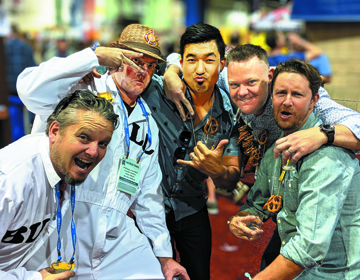
GABF never disappoints when it comes to unique beers. And the ones listed here are just the beginning. If you do your research, you can try so many different styles and types of beer. Don’t be afraid to step outside of a comfort zone. If you are, you might just miss some great beers.
Mark your calendar for 2020 as the 34th Annual Great American Beer Festival is set for September 24-26, 2020. Visit www.greatamericanbeerfestival.com for more information and for a list of all winners.